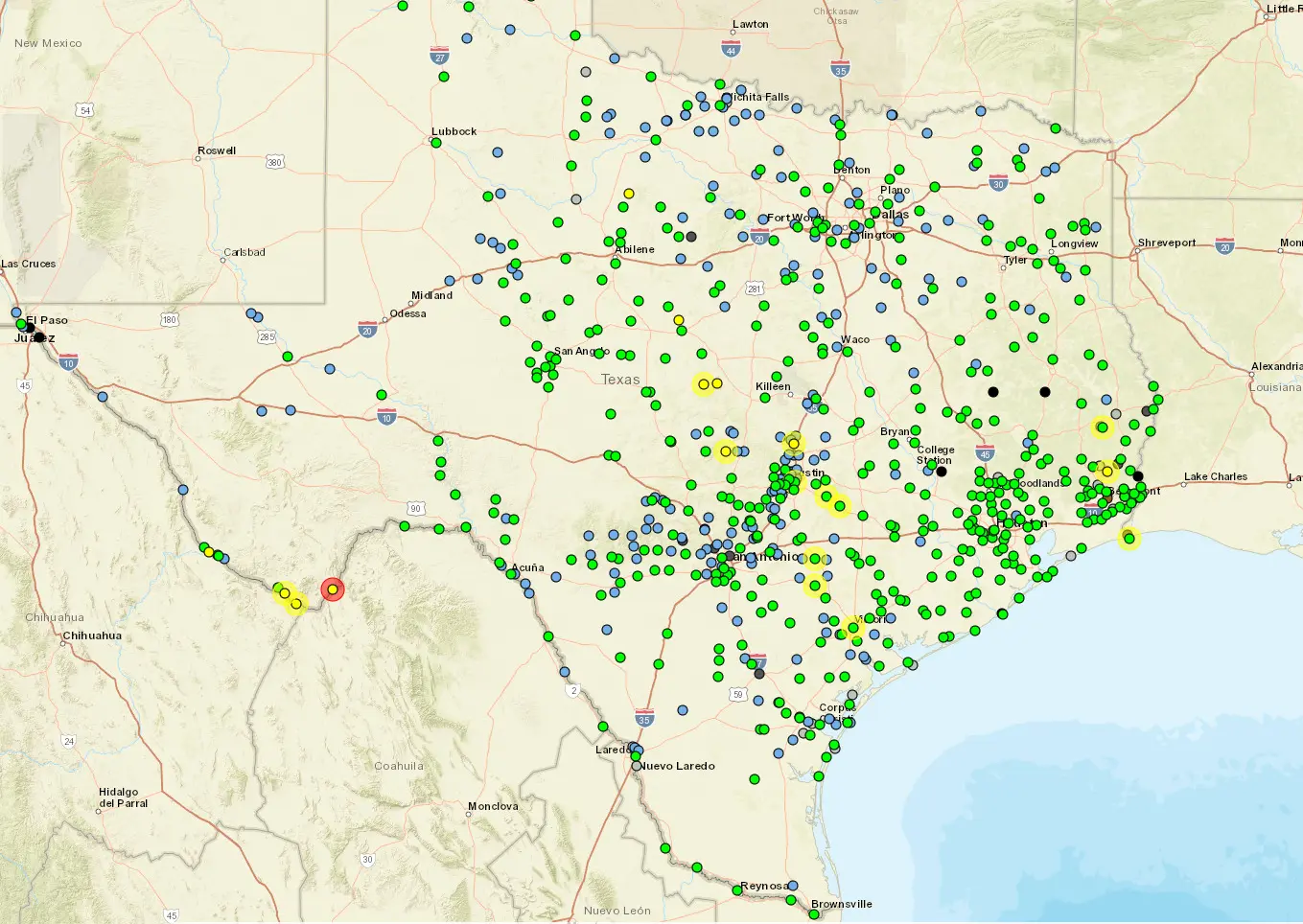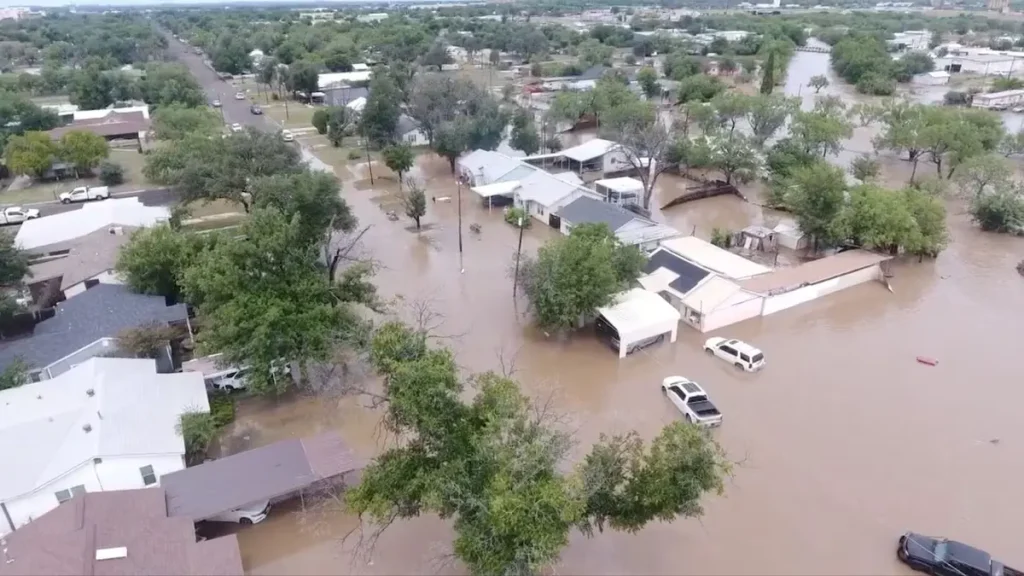What Caused the Flash Flooding in Texas?
Central Texas, particularly Kerr County along the Guadalupe River, experienced an extreme flash flood over July 4–5, 2025, triggered by a mesoscale convective system fueled by Tropical Storm Barry remnants and intense atmospheric moisture. Meteorologists reported up to 20 inches of rain in some locations—equivalent to four months’ worth of precipitation—falling within hours, causing the Guadalupe River to surge 26–29 feet in under an hour.
Tropical Storm Barry: The remnants of Tropical Storm Barry stalled over central Texas due to a high-pressure system, leading to prolonged heavy rainfall. This phenomenon, known as “training thunderstorms,” resulted in excessive rainfall over the same areas.
Topography of the Hill Country: The region’s steep hills and narrow valleys, coupled with rocky, impermeable soil, exacerbated runoff and rapid river rises. The Guadalupe River, for instance, rose 26 feet in just 45 minutes.
Climate Change: Experts suggest that climate change may be contributing to more intense and unpredictable weather patterns, increasing the likelihood of such extreme events.
Where in Texas Is It Flooding?
The flash flooding primarily affected the following areas:
Kerr County: Including the towns of Kerrville and Hunt, where the Guadalupe River experienced unprecedented surges.
Williamson County: Particularly the Shady River RV Resort in Georgetown, where vehicles and RVs were swept away.
Travis County: Including parts of Austin, where several fatalities and missing persons were reported.
San Angelo: Where flash flood emergencies were declared early Friday morning.
For real-time updates and detailed maps of affected areas, refer to the Texas Flood Map.

Impact & Scale of the Disaster
Death Toll: 51 deaths confirmed in Kerr County, including 15 children, with over 37 still missing—including girls from Camp Mystic summer camp newsweek.com+15wsj.com+15thetimes.co.uk+15.
Camp Mystic: The private girls’ summer camp near Hunt saw the river rise an astonishing 26 feet in 45 minutes. Approximately 750 campers and staff were present, with dozens still unaccounted for cbsnews.com+5theguardian.com+5texastribune.org+5.
Infrastructure Damage: Many homes, roads, and bridges have been destroyed or washed out. Emergency services report over 850 resumptions of rescues and evacuations .
Ongoing Rescue Operations
Over 1,000 first responders—including 14 helicopters, 12 drones, game wardens, and hundreds of ground teams—have been deployed. As of now, at least 237 people have been rescued, many airlifted from trees and rooftops texastribune.org+12theguardian.com+12cbsnews.com+12.
State and federal emergency declarations are in place, enabling rapid mobilization of aid. Search-and-rescue efforts continue through the weekend despite challenging weather and flooding .
What to Do in a Flash Flood
Flash floods can occur with little warning. It’s crucial to take immediate action to protect yourself and others:
Move to Higher Ground: If you are in a flood-prone area, relocate to elevated ground immediately.
Avoid Floodwaters: Never walk, swim, or drive through floodwaters. As little as six inches of fast-moving water can sweep you away.
Stay Informed: Monitor local news and weather channels for updates and instructions from authorities.
Follow Evacuation Orders: If local authorities issue evacuation orders, comply promptly and safely.
Prepare an Emergency Kit: Have essentials like water, non-perishable food, medications, and important documents readily available.
Flash Flood Safety Resources
Texas Department of Transportation: Provides guidelines on driving safety during flash floods.
Texas Department of Insurance: Offers a comprehensive guide on flash flood safety measures.
National Weather Service: Details on types of flooding in Texas and protective actions.
Climate Change Connection
Experts warn that such intense flash floods are becoming more common due to climate change. Warmer Gulf temperatures increase atmospheric moisture and storm intensity, turning hillside terrain into a flash flood hotspot—Texas Hill Country is especially vulnerable.
The catastrophic flash flooding in central Texas during July 4, 2025, stands as one of the worst natural disasters in recent memory. Rapid river surges, extensive loss of life—including numerous children—and widespread destruction reveal a tale of both tragedy and community strength. With ongoing rescue efforts and climate concerns looming, the road to healing and preparedness in Texas is just beginning.


